40 drag each label into the appropriate position in order to identify which type of macromolecule is the target of each digestive enzyme or compound
BIOLOGY E - Essay Help 1) When would a cell use the dehydration and hydrolysis reaction of polysaccharides? (ii) Identify each type of reaction: K4 a. 2NaOH + H2SO4 -> Na2So4 + 2H20 b. C6H12O6 + 602 -> 6CO2 + 6H20 c. … Under normal conditions, you would not expect to see this in urine or glomerular filtrate? Albumin. Glucose. Amino ACIDS. Phosphate ions. Welcome to CK-12 Foundation | CK-12 Foundation FlexBook Platform®, FlexBook®, FlexLet® and FlexCard™ are registered trademarks of CK-12 Foundation. +
HW 19 (25.6 & 26.1).docx - 1. Drag each label into the appropriate ... Drag each label into the appropriate position in order to identify which type of macromolecule is the target of each digestive enzyme or compound. a. CARBOHYDRATE: pancreatic amylase, dextrinase, glucoamylase, lactase, salivary amylase, maltase, sucrase b.
Drag each label into the appropriate position in order to identify which type of macromolecule is the target of each digestive enzyme or compound
LookWAYup definition of - senses, usage, synonyms, thesaurus. Online Dictionaries: Definition of Options|Tips Chapter 17 digestive Flashcards - Easy Notecards Drag each label into the appropriate position in order to identify which type of macromolecule is the target of each digestive enzyme or compound. 20 Indicate where each enzyme (or its inactive precursor) is produced. 21 Classify each enzyme based on the substrate it decomposes. 22 The figures depict the stages of swallowing. 11.2 Digestive System - Concepts of Biology - 1st Canadian Edition The stomach is a saclike organ that secretes gastric digestive juices. Protein digestion is carried out by an enzyme called pepsin in the stomach chamber. The highly acidic environment kills many microorganisms in the food and, combined with the action of the enzyme pepsin, results in the catabolism of protein in the food.
Drag each label into the appropriate position in order to identify which type of macromolecule is the target of each digestive enzyme or compound. pearsoncmg.com Labeling, ranking, sorting, or sentence completion questions. All of these question types require you to position items into an area of the answer box. Answer these kinds of questions on a computer, not on a smartphone. Press Tab to move forward or Shift/Tab to move backwards through the provided answer items. Nelson Biology 12.pdf [30j71j2z320w] - doku.pub Match each macromolecule on the left with the most appropriate description on the right. K/U (a) fats (i) directly involved with inheritance (b) proteins (ii) range from small sugar (c) carbohydrates molecules to large starch (d) nucleic acids molecules (iii) responsible for long-term energy storage; also called lipids (iv) one or more folded ... 9.1 The Structure of DNA - Concepts of Biology - 1st Canadian Edition The DNA molecule is a polymer of nucleotides. Each nucleotide is composed of a nitrogenous base, a five-carbon sugar (deoxyribose), and a phosphate group. There are four nitrogenous bases in DNA, two purines (adenine and guanine) and two pyrimidines (cytosine and thymine). A DNA molecule is composed of two strands. Expat Dating in Germany - chatting and dating - Front page DE Expatica is the international community’s online home away from home. A must-read for English-speaking expatriates and internationals across Europe, Expatica provides a tailored local news service and essential information on living, working, and moving to your country of choice.
Solved > Drag each item to the correct thermoregulatory strategy ... Drag each label into the appropriate position in order to identify whether the structure is an actual part of the digestive tract or an accessory... Drag each label into the appropriate position in order to identify which type of macromolecule is the target of each digestive enzyme or compound.... AP Biology - CourseNotes 3 reactions changing glucose into a compound that can be readily cleaved into 3-carbon phosphorylated molecules; 2 of the reactions require use of ATP; step B - cleavage/rearrangement 2 reactions break up 6-carbon molecule into 2 3-carbon molecules; 1st of 2 reactions forms G3P and another molecule that turns into G3P through the 2nd reaction Success Essays - Assisting students with assignments online Get 24⁄7 customer support help when you place a homework help service order with us. We will guide you on how to place your essay help, proofreading and editing your draft – fixing the grammar, spelling, or formatting of your paper easily and cheaply. BILOGY C - Essay Help 1) Choosing a Micropipettor For each of the following volumes, which micropipettor would be most appropriate to use (P1000, P200, or P20)? EX. 737 ul P1000 1. 1 pl 2. 19 pl 21 ul 4. 150 pl 400 pl C Draw a labelled diagram that explains the pressure-flow model of nutrient movement inside phloem in plants.
Solved Drag each label into the appropriate position in - Chegg Question: Drag each label into the appropriate position in order to identify which type of macromolecule is the target of each digestive enzyme or compound. Chymotrypsin Lingual lipase Bile salts Pepsin HCI Gastric lipase Salivary amylase Pancreatic amylase Pancreatic lipase Trypsin Carbohydrate Protein Lipid This problem has been solved! Solved Drag each label into the appropriate position in - Chegg question: drag each label into the appropriate position in order to identify which type of macromolecule is the target of each digestive enzyme or compound gastric lipase pancreatic amylase lactase lecithin carboxypeptidase salivary amylase dipeptidase maltase pancreatic lipaso lingual lipase aminopeptidase sucrase dextrinase bile salts trypsin … CH103 - Chapter 8: The Major Macromolecules - Chemistry 11.1 Introduction: The Four Major Macromolecules Within all lifeforms on Earth, from the tiniest bacterium to the giant sperm whale, there are four major classes of organic macromolecules that are always found and are essential to life. These are the carbohydrates, lipids (or fats), proteins, and nucleic acids. Public Home | myAIC Rental housing has become increasingly unaffordable, making it difficult for average workers to maintain their standard of living. A new report from the National Low Income Housing Coalitions says there are zero states left where a minimum wage worker can afford a two-bedroom apartment. According to their research, the average U.S. worker must earn just over $25 an hour to afford a two-bedroom ...
Digestive Enzymes and its Types -Amylase, Protease and Lipase - BYJUS Amylase is defined as a digestive enzyme that breaks starch into small carbohydrate molecules. This enzyme is produced in two areas. Firstly, salivary glands in our mouth generate salivary amylase that starts the process of digestion by breaking down starch and converting it into maltose and smaller carbohydrate.
3 Molecular Structure and Function - NCBI Bookshelf The properties of proteins must be determined by the amino acids they contain and the order in which they are linked. While these properties may become complex and far removed from any property inherent in single amino acids, the existence of a limited set of fundamental building blocks restricts the ultimate functional properties of proteins.
Unit 6 Flashcards | Quizlet Drag each label into the appropriate position in order to identify which type of macromolecule is the target of each digestive enzyme or compound. Carbohydrate: Salivary amylase
Enzymes and the active site (article) | Khan Academy The answer depends on the enzyme. Some enzymes speed up chemical reactions by bringing two substrates together in the right orientation. Others create an environment inside the active site that's favorable to the reaction (for instance, one that's slightly acidic or non-polar).
Drag each label into the appropriate position in order to identify ... Drag each label into the appropriate position in order to identify where each secretion enters the GI tract. Complete each sentence by dragging the proper label into the appropriate position.Then, re-arrange the sentences into a logical order of digestive processes. Complete each sentence by dragging the proper label into the correct position.
DOC Science Enhanced S&S Biology - Virginia Type of Macromolecule Elements (C, H, O, N, S, P) Monomer ... Have them label the parts of the cell as appropriate, showing at least the. cell wall. cytoplasm. nucleus. nuclear membrane. chromosomes. chromatin. cell plate. 2. For fresh material, have students use the procedure found in a standard reference manual, or use the method described at ...
Digestive Flashcards | Quizlet digestion is the breakdown large organic molecules into component parts that can be absorbed. carbohydrates are digested into (monosaccharides), protein into (amino acids), and triglycerides into fatty acids and glycerol match the types of digestion with the correct description mechanical digestion- includes mastication and mixing food
Ch. 18 Digestive Flashcards | Quizlet Identify whether the structures are associated with the oral cavity or the stomach by dragging each label into the appropriate position. It is good that Emily does not remember being a newborn, because she was miserable, vomiting frequently. An X-ray revealed hypertrophic pyloric stenosis.
BIO23 F19-S20 Complete Course Guide by Human Anatomy - Issuu List each type of bond in order by relative strength. b. Explain the mechanism of each type of bond. c. Provide biologically significant examples of each. ... Draw and label each of the functional ...
Cellular organelles and their functions | Kenhub Lysosomes are membranous sacs that hydrolyze macromolecules to carry out intracellular digestion. This may occur for a variety of reasons. Single-celled organisms, such as amoebas, use lysosomes to digest food products. This process is referred to as phagocytosis.
Solved > Drag each label into the appropriate position in:277816 ... Drag each label into the appropriate position in order to identify which type of macromolecule is the target of each digestive enzyme or compound.... Drag each label into the appropriate position to identify what type of immunity is classified by each label.....this is the only one I have left...
Monosaccharides - an overview | ScienceDirect Topics The monosaccharide consists of single unit which contains carbon chain of three to six carbon. They can combine through glycosidic bonds to form larger carbohydrates. The main function of monosaccharide is to produce and store energy. Glucose and fructose are the most available monosaccharide in nature.
Principles and Techiniques of Biochemistry and Molecular ... Enter the email address you signed up with and we'll email you a reset link.
Transport of Oxygen in the Blood | Biology for Majors II - Lumen Learning Hemoglobin, or Hb, is a protein molecule found in red blood cells (erythrocytes) made of four subunits: two alpha subunits and two beta subunits (Figure 1). Each subunit surrounds a central heme group that contains iron and binds one oxygen molecule, allowing each hemoglobin molecule to bind four oxygen molecules.
11.2 Digestive System - Concepts of Biology - 1st Canadian Edition The stomach is a saclike organ that secretes gastric digestive juices. Protein digestion is carried out by an enzyme called pepsin in the stomach chamber. The highly acidic environment kills many microorganisms in the food and, combined with the action of the enzyme pepsin, results in the catabolism of protein in the food.
Chapter 17 digestive Flashcards - Easy Notecards Drag each label into the appropriate position in order to identify which type of macromolecule is the target of each digestive enzyme or compound. 20 Indicate where each enzyme (or its inactive precursor) is produced. 21 Classify each enzyme based on the substrate it decomposes. 22 The figures depict the stages of swallowing.
LookWAYup definition of - senses, usage, synonyms, thesaurus. Online Dictionaries: Definition of Options|Tips
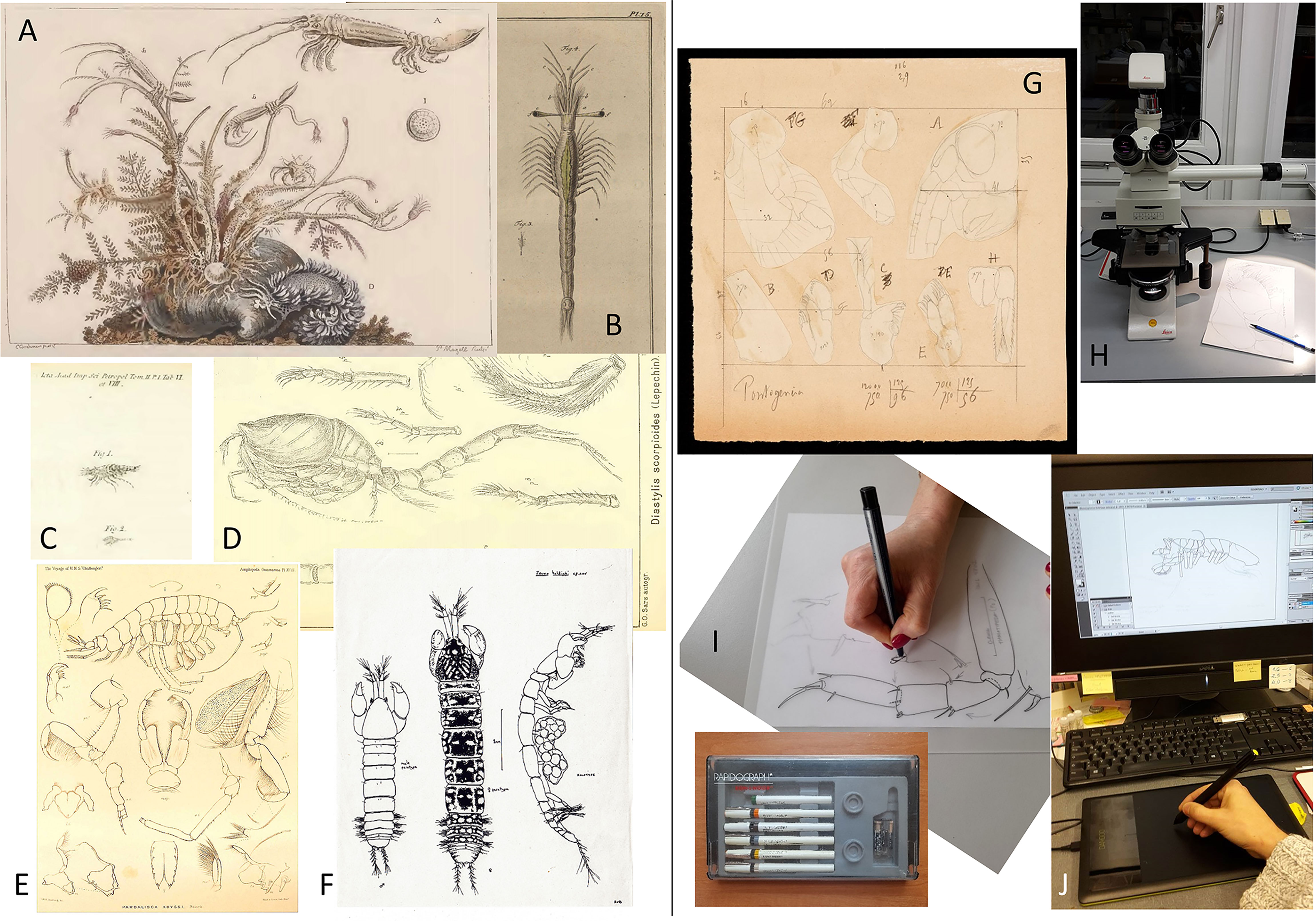
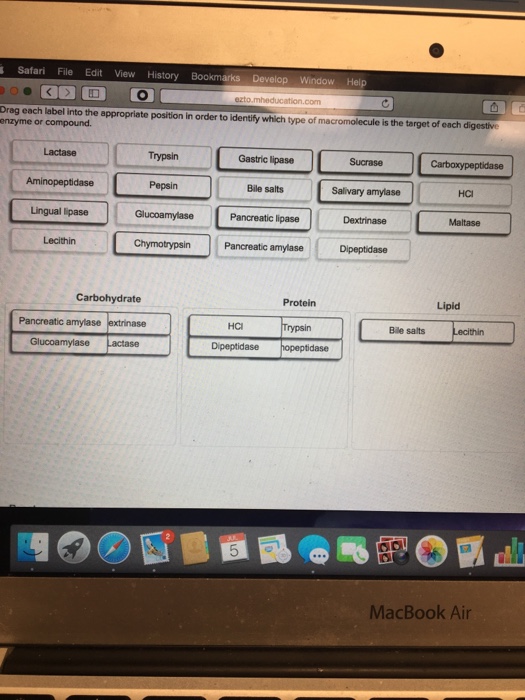

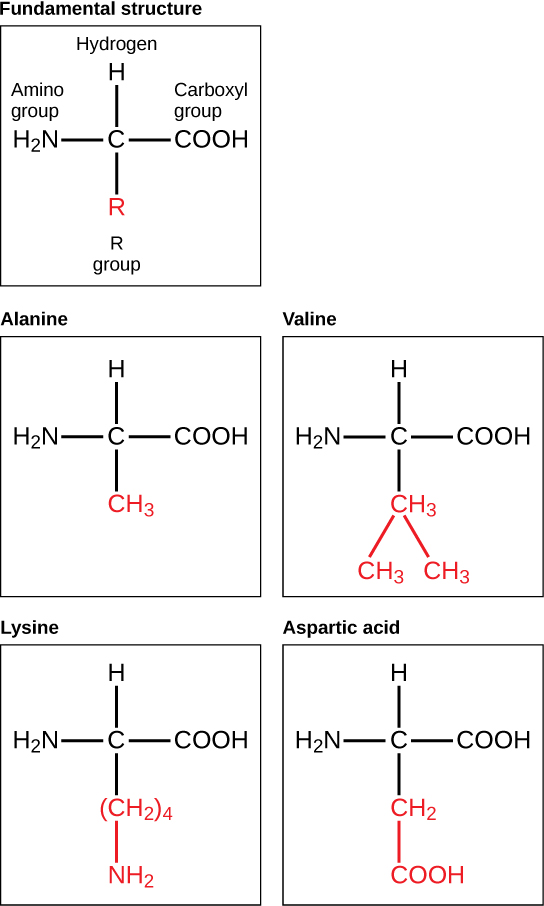
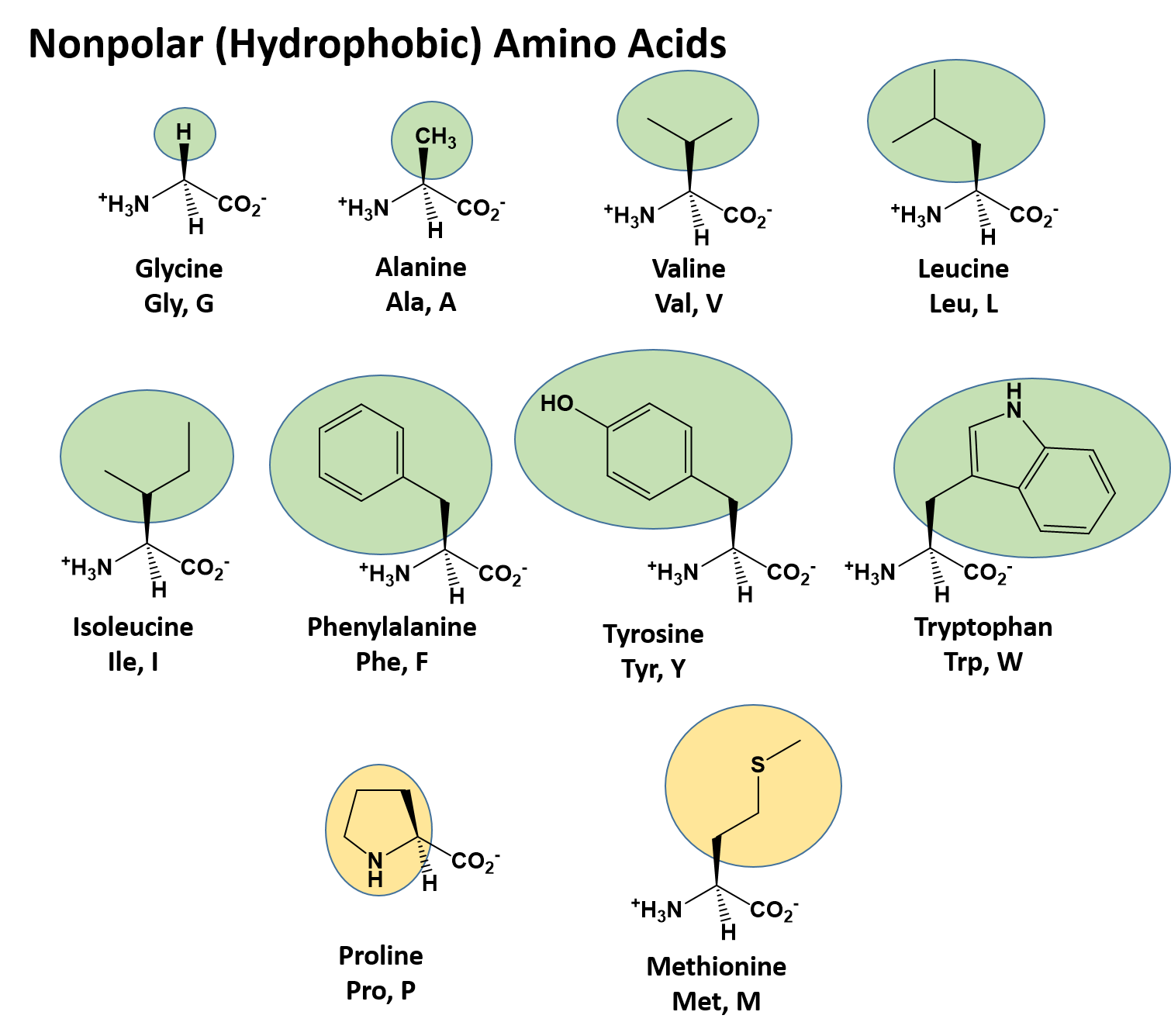

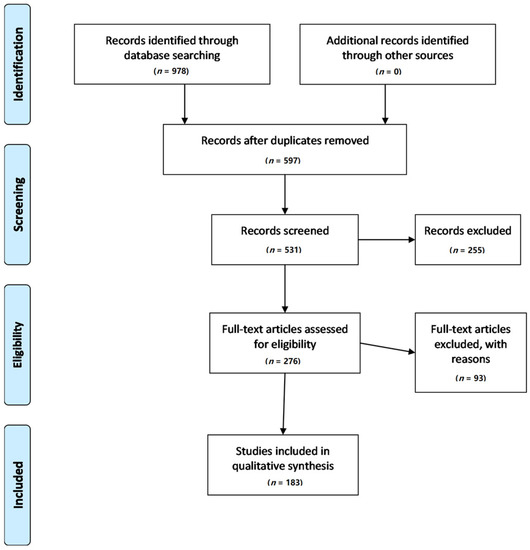
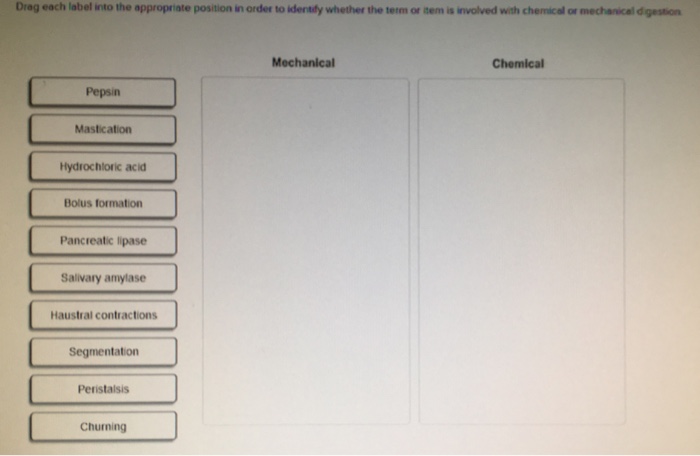







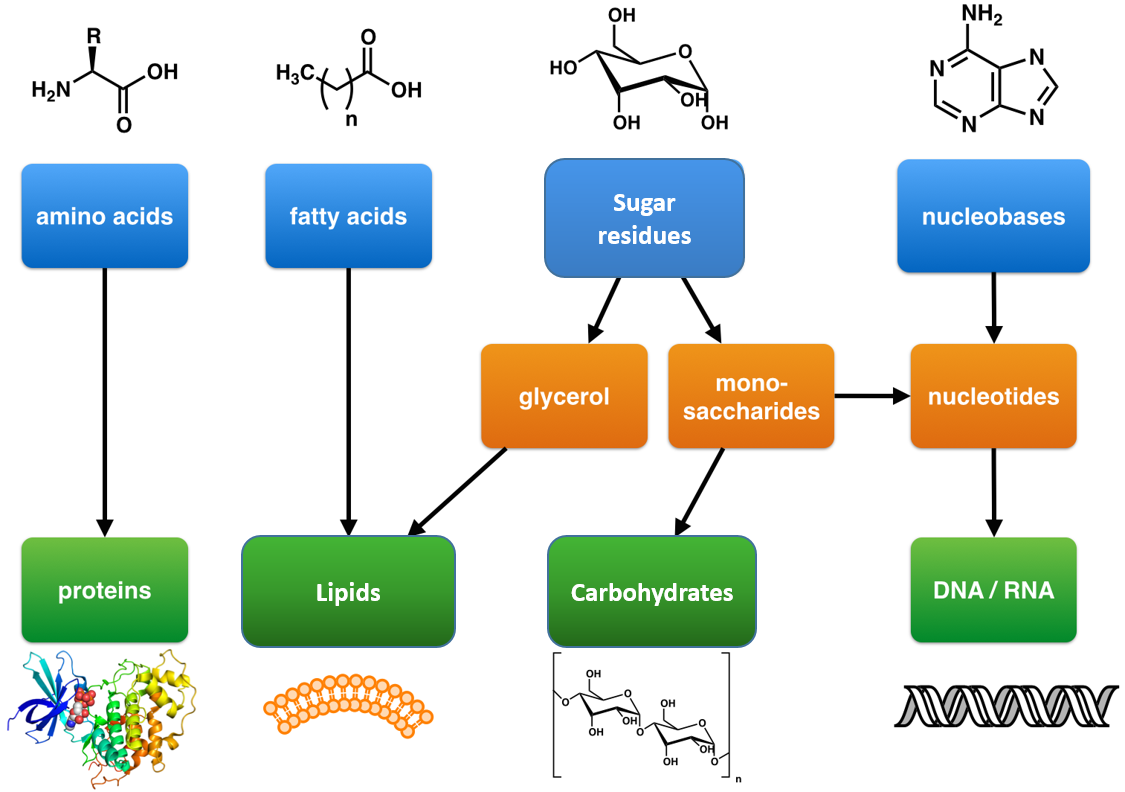
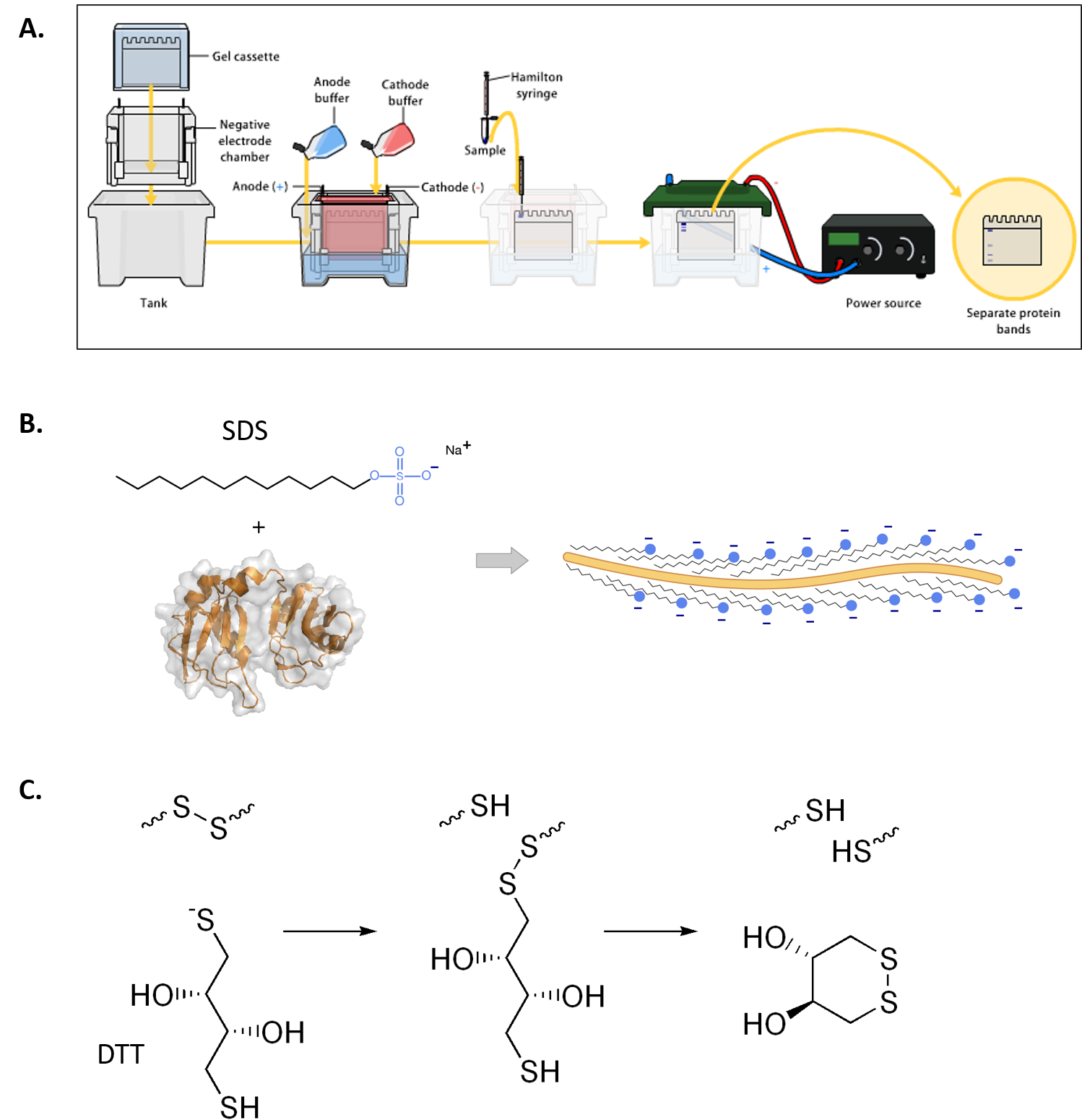


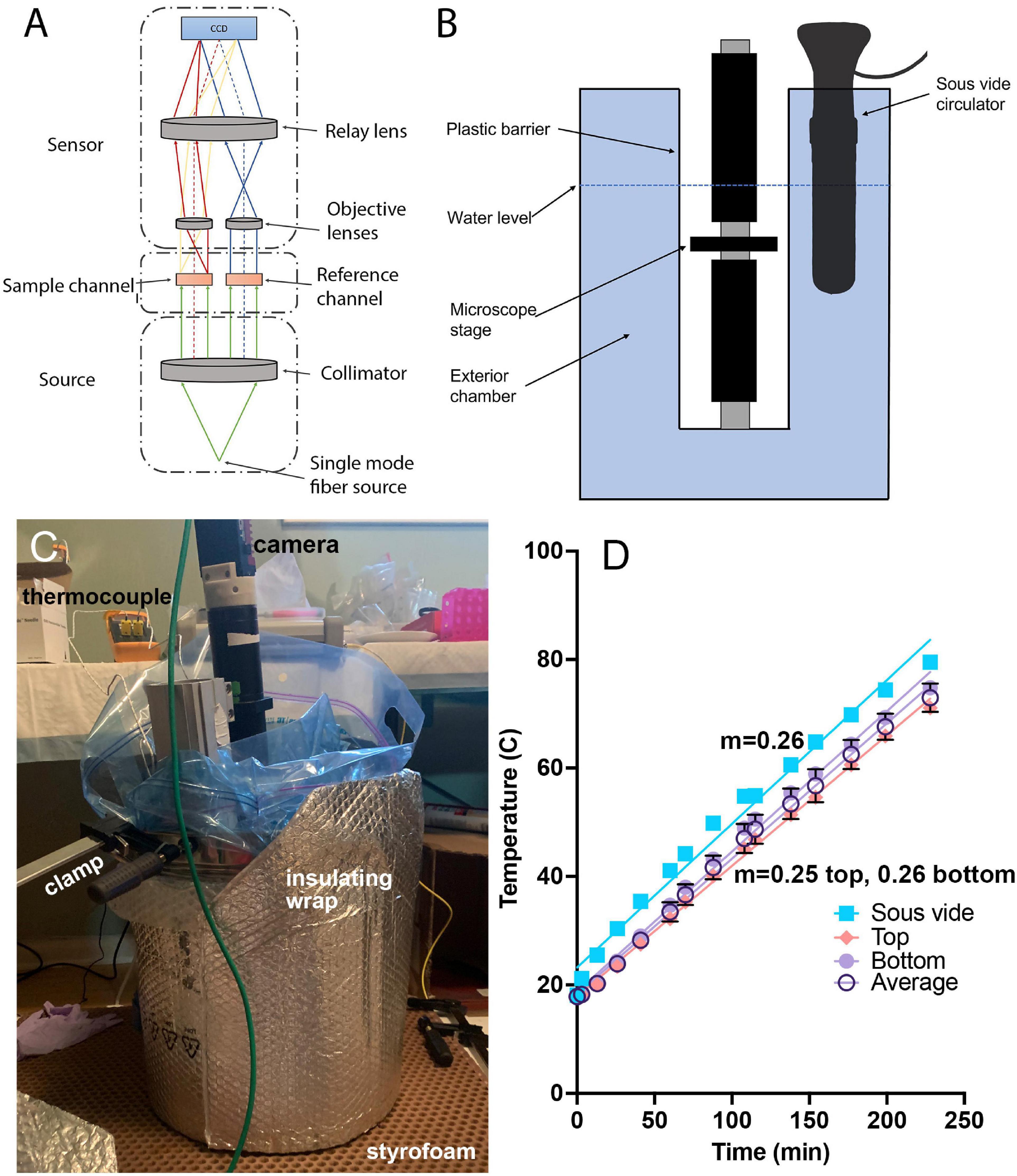

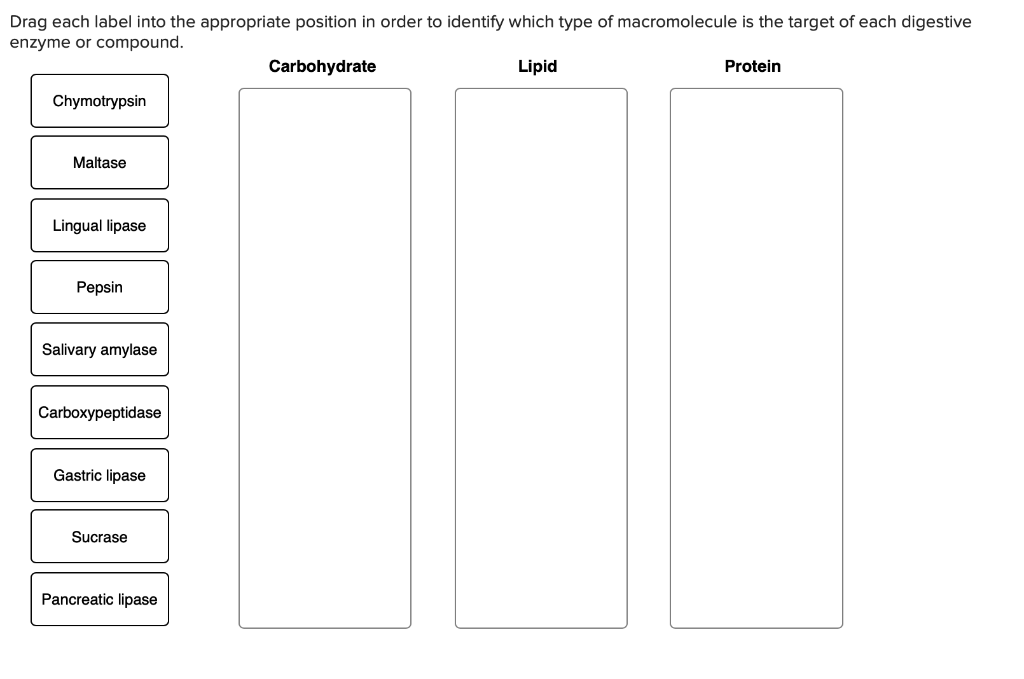
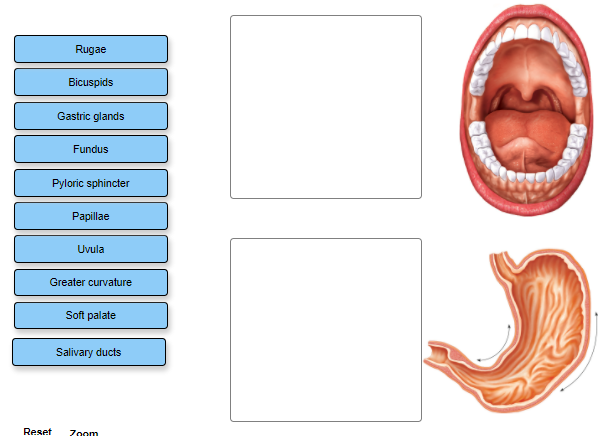






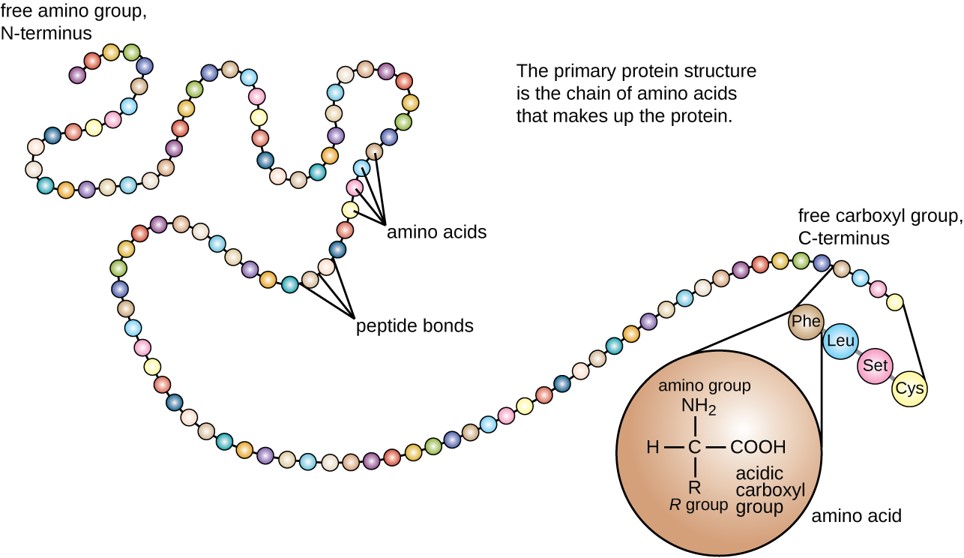

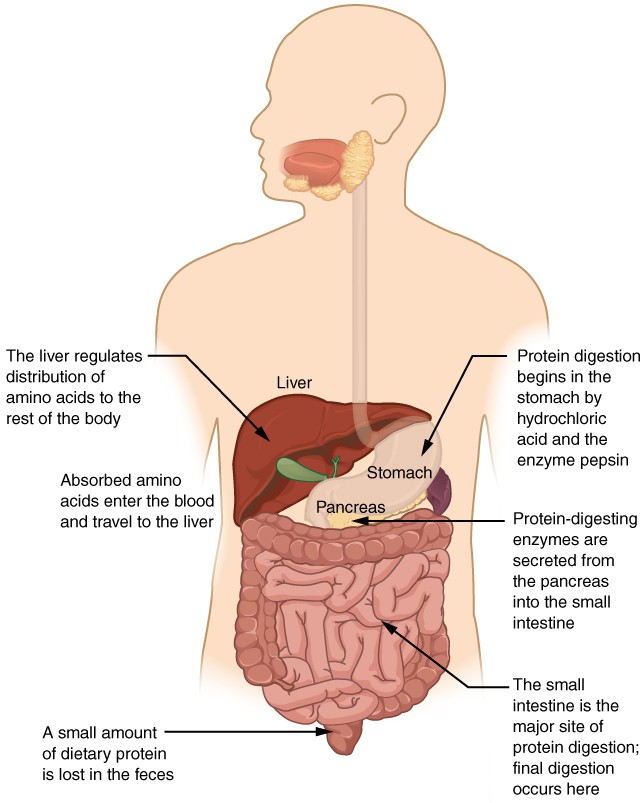



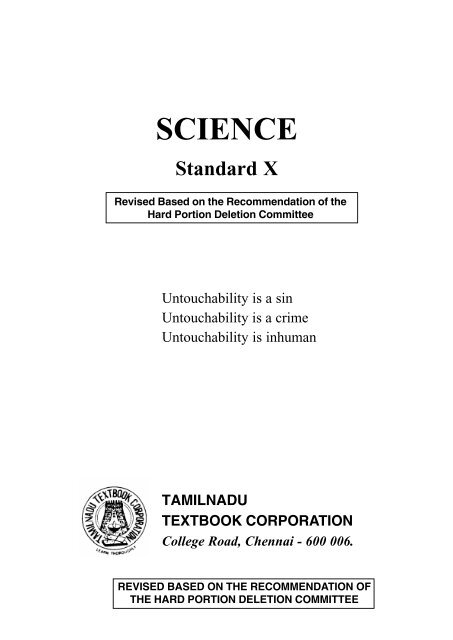
Post a Comment for "40 drag each label into the appropriate position in order to identify which type of macromolecule is the target of each digestive enzyme or compound"